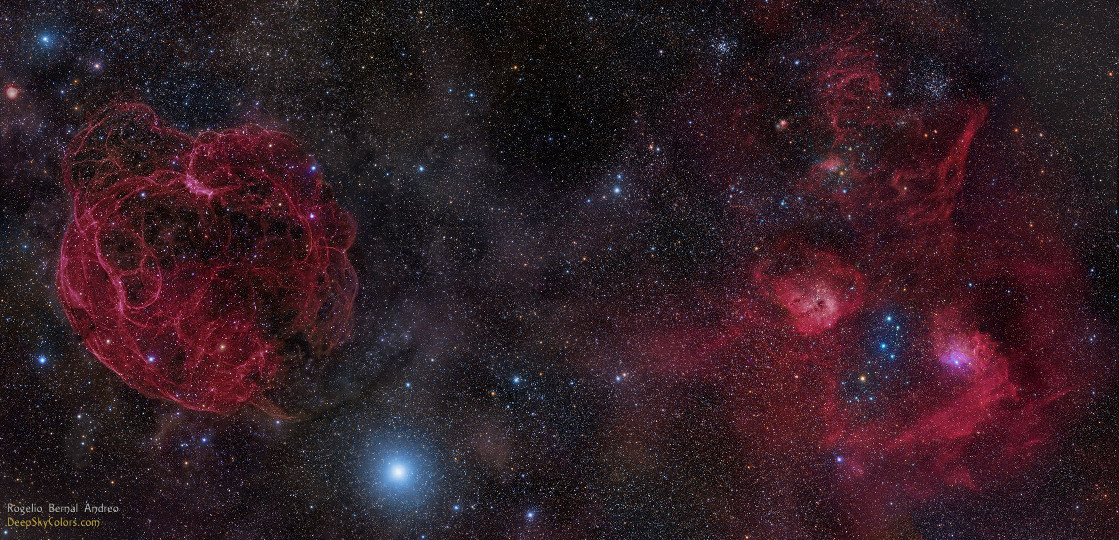FEBRUARY 13, 2014
Downtown Auriga
EXPLANATION
Rich in star clusters and nebulae, the ancient constellation of Auriga, the Charioteer, rides high in northern winter night skies. Spanning nearly 24 full moons (12 degrees) on the sky, this deep telescopic mosaic view recorded in January shows off some of Auriga’s most popular sights for cosmic tourists. The crowded field sweeps along the plane of our Milky Way galaxy in the direction opposite the galactic center. Need directions? Near the bottom of the frame, at the Charioteer’s boundary with Taurus the Bull, the bright bluish star Elnath is known as both Beta Tauri and Gamma Aurigae. On the far left and almost 3000 light-years away, the busy, looping filaments of supernova remnant Simeis 147 cover about 150 light-years. Look toward the right to find emission nebula IC 410, significantly more distant, some 12,000 light-years away. Star forming IC 410 is famous for its embedded young star cluster, NGC 1893, and tadpole-shaped clouds of dust and gas. The Flaming Star Nebula, IC 405, is just a little farther along. Its red, convoluted clouds of glowing hydrogen gas are energized by hot O-type star AE Aurigae. Two of our galaxy’s open star clusters, Charles Messier’s M36 and M38 line up in the starfield above, familiar to many binocular-equipped skygazers.
Image Credit & Copyright
Rogelio Bernal Andreo (Deep Sky Colors)


